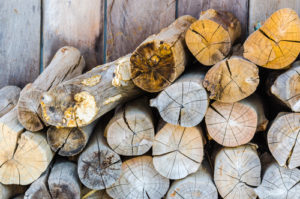Over our years in the chimney business, Ashbusters has been asked just about every kind of question for chimney services. One that we hear more frequently than others is how to burn the best wood fires. Our trained and certified chimney experts place a top priority on educating our customers. Our mission is to educate on how to efficiently and safely operate a traditional masonry fireplace. We are always happy to share our fireplace secrets. So, we would like to tell you more about choosing proper firewood.
What should I look for when shopping for firewood?
According to The Old Farmer’s Almanac, how well firewood burns is determined by two factors: water content and density. The drier and the denser the firewood, the more heat it can produce and the better it will burn.
What species of wood is the densest?
If you depend on your masonry fireplace to provide a good deal of heat to your home, hardwoods like oak, hickory, and maple burn longer and hotter than softwoods like cedar and spruce do. A good rule of thumb is the heavier the wood weighs, the hotter it can burn. Although denser firewood may be more expensive, you will not have to use as much of it as you would a softer wood to get the same amount of heat. Other recommended hardwood species for firewood include beech, birch, elm, and black cherry.
Why does the water content matter when choosing firewood?
Composed of microscopic tubes that transfer water from the roots of the tree to its leaves, wood can have a moisture content of as much as 45 percent, even after it has been cut. When you try to burn wood with such a high water content, it can result in smoke issues, unpleasant odor problems, and accelerated chimney fire risks due to rapid creosote buildup. This is why Ashbusters recommends only burning seasoned firewood, which means that it has been allowed to dry for at least six months after it has been cut.
After purchasing seasoned firewood, it is important to properly store it so that it keeps dry. If you do not have firewood storage shed, you can stack the logs on pallets, concrete blocks, or gravel to keep it from absorbing ground moisture and then loosely cover the stacks with a tarp. Make sure that air is able to circulate through the stacks to allow for further drying.
If you are able to cut your own firewood, now is the time to get started so that it will be sufficiently seasoned to be ready to burn this fall. For more wood burning tips and tricks, contact us today at Ashbusters. Our professional chimney experts are here to help you enjoy the best wood fires.
